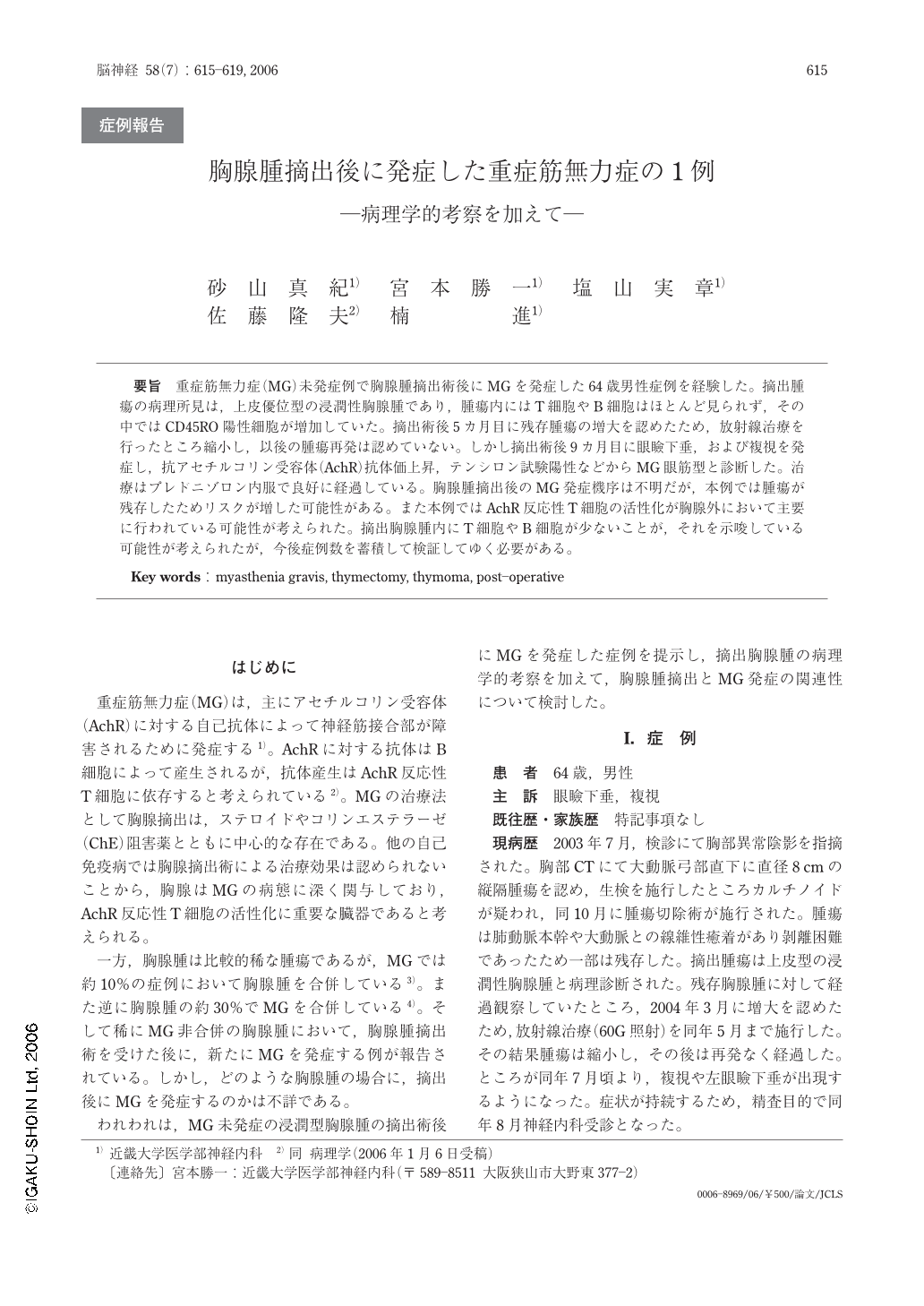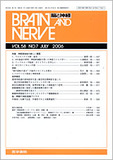Japanese
English
- 有料閲覧
- Abstract 文献概要
- 1ページ目 Look Inside
- 参考文献 Reference
要旨 重症筋無力症(MG)未発症例で胸腺腫摘出術後にMGを発症した64歳男性症例を経験した。摘出腫瘍の病理所見は,上皮優位型の浸潤性胸腺腫であり,腫瘍内にはT細胞やB細胞はほとんど見られず,その中ではCD45RO陽性細胞が増加していた。摘出術後5カ月目に残存腫瘍の増大を認めたため,放射線治療を行ったところ縮小し,以後の腫瘍再発は認めていない。しかし摘出術後9カ月目に眼瞼下垂,および複視を発症し,抗アセチルコリン受容体(AchR)抗体価上昇,テンシロン試験陽性などからMG眼筋型と診断した。治療はプレドニゾロン内服で良好に経過している。胸腺腫摘出後のMG発症機序は不明だが,本例では腫瘍が残存したためリスクが増した可能性がある。また本例ではAchR反応性T細胞の活性化が胸腺外において主要に行われている可能性が考えられた。摘出胸腺腫内にT細胞やB細胞が少ないことが,それを示唆している可能性が考えられたが,今後症例数を蓄積して検証してゆく必要がある。
We report a 64-years old man who had myasthenia gravis (MG) appearing after surgical removal of thymoma. His thymoma was not removed completely due to adhesion with other organs. Histopathologicaly, the thymoma was an invasive and predominantly epithelial type. CD45RO positive cells increased in the thymus. After five months of thymectomy, he received radiation therapy because the remaining tumor grew up slightly. The radiation was effective, and the recurrence of tumor has never been detected after that. However, nine months after the surgery, he noticed ptosis and double vision, and he was diagnosed as MG because of positive serum anti-AchR antibody and positive Tensilon test. He received oral prednisolone, and he has kept a good condition. Previous reports have shown that an extensive thymectomy tends to reduce the incidence of post-operative MG. In our case, the remaining thymoma might increase the risk of MG. And the removed thymus might contain an unknown regulatory factor that could inhibit a development of MG. The risk factor for development of post-operative MG should be investigated in future.

Copyright © 2006, Igaku-Shoin Ltd. All rights reserved.


